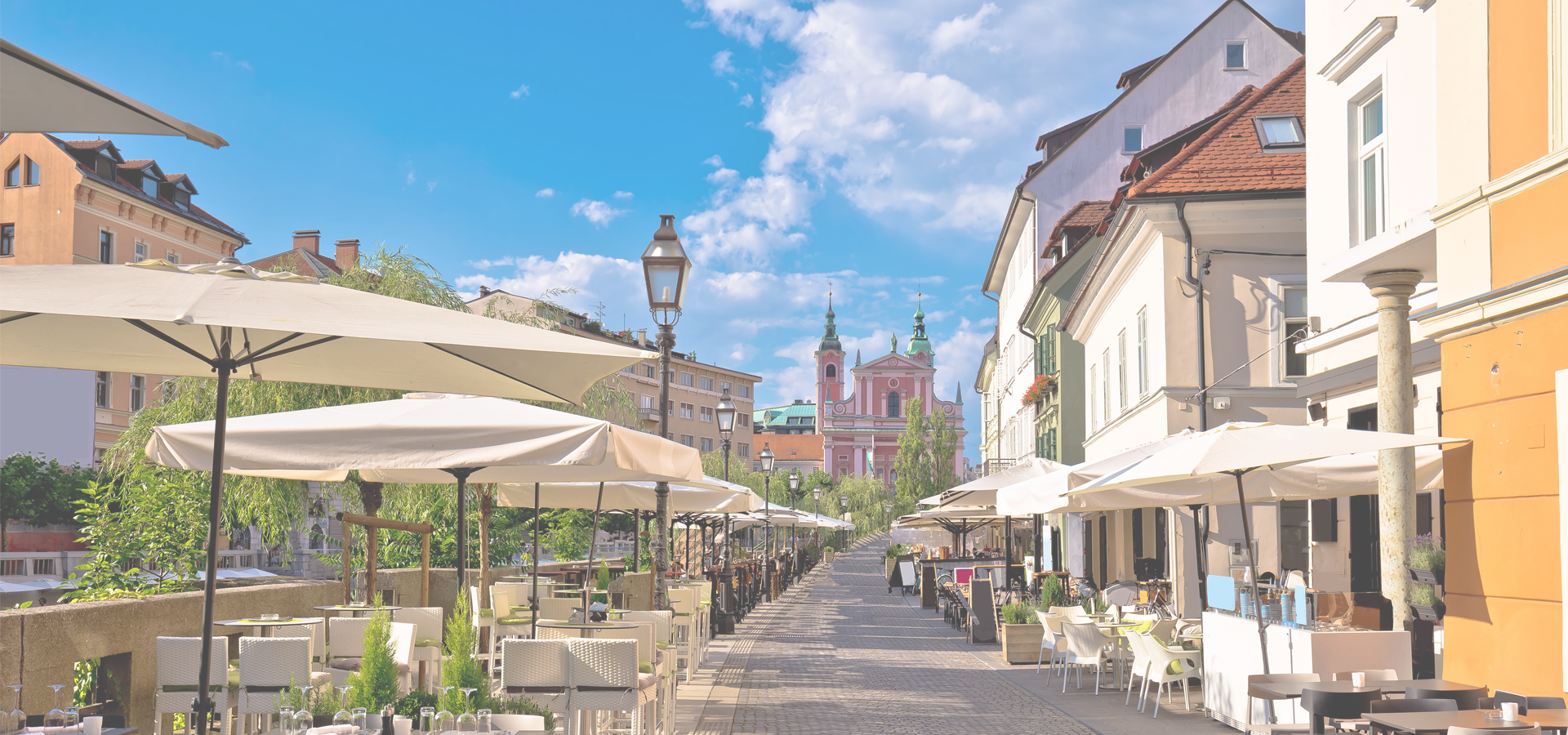Gornja Radgona, Mura Region, Slovenia
🇸🇮 Gornja Radgona (Oberradkersburg, Felsőregede) is a town in Slovenia. It is the seat of the Municipality of Gornja Radgona. Once it was a defensive stronghold for today's regional centre and its twin city, Bad Radkersburg, on the other side of the Mura River in Austria. The towns were split in 1919, when the state of Styria was divided between Austria and Slovenia. They afterward developed separately, and Gornja Radgona grew into a new town centre.
History Traces of Neolithic settlement on Castle Hill attest to settlement during the Urnfield culture. Later finds indicate that there may have been a small Roman settlement here. The Parish of Gornja Radgona belonged to the Diocese of Salzburg and was founded under the Spanheims in the first half of the 12th century. The parish church in Gornja Radgona is dedicated to Saint Peter and was built in 1813 and extended in 1890.
The history of Gornja Radgona itself reaches back to the 12th century, when a settlement was established beneath Ratigoj Castle. King Albert I of Habsburg founded today's Radkersburg on an island in the Mura River, and it was mentioned as a market in 1265 and as a town in 1299. Eventually the old settlement turned into a suburb of the town. Gornja Radgona was built on the slope of Castle Hill (265 m) and the tip of the Slovene Hills (Slovene: Slovenske gorice), which separate the Apače Basin from the Mura Basin.
Because of its important location on the Mura River, in the 12th and 13th centuries Gornja Radgona and Radkersburg suffered multiple attacks by the Hungarians and, in the 15th and 16th centuries, attacks by the Ottoman Turks. In the early 18th century, peasant rebellions were a major problem.
In 1605 the Mura flooded, causing great damage to Gornja Radgona and Radkersberg, and nearly every generation experienced the plague. The worst outbreak was in 1680, and left many houses without occupants.
Gornja Radgona received market rights in 1907, and town status after World War II. Prior to 1918 it was administratively connected with Radkersburg. In February 1929, exceptionally cold weather caused ice to accumulate against the old wooden bridge between Gornja Radona and Radkersburg, destroying it. A new wooden bridge was not built until 1932. The favorable geographical location and economic contacts (including joint cooperation in preventing flood and fires, and important transport links) resulted in the joint construction of a new bridge. The bridge was ceremonially opened on 12 October 1968 by Yugoslav leader Josip Broz Tito and Austrian President Franz Jonas.
During the Ten-Day War for Slovenia's independence in 1991, major fighting occurred at the Gornja Radgona border crossing.
Economy Gornja Radgona is also known as a host of international fair events that are organized by Pomurski Sejem d.d. The best known is the International Agricultural and Food Fair, which is held every year and is attended by over 120,000 people. Gornja Radgona is known also for its wines.
Settlements In addition to the municipal seat of Gornja Radgona, the municipality also includes the following settlements: • Aženski Vrh • Črešnjevci • Gornji Ivanjci • Hercegovščak • Ivanjski Vrh • Ivanjševci ob Ščavnici • Ivanjševski Vrh • Kunova • Lastomerci • Lokavci • Lomanoše • Mele • Negova • Norički Vrh • Očeslavci • Orehovci • Orehovski Vrh • Plitvički Vrh • Podgrad • Police • Ptujska Cesta • Radvenci • Rodmošci • Spodnja Ščavnica • Spodnji Ivanjci • Stavešinci • Stavešinski Vrh • Zagajski Vrh • Zbigovci.
Ljubljana Time

Gornja Radgona has a population of over 8,617 people. Gornja Radgona also forms part of the wider Mura District which has a population of over 114,238 people. Gornja Radgona is situated near Murska Sobota.
Twin Towns - Sister Cities Gornja Radgona has links with:
🇩🇪 Bruchsal, Germany🇫🇷 La Roche-sur-Yon 46.671
🇫🇷 Lons-le-Saunier 46.676
🇭🇺 Békéscsaba 46.679
🇫🇷 Saint-Amand-Montrond 46.726
🇺🇦 Nova Kakhovka 46.75
🇲🇳 Baruun-Urt 46.667
🇸🇮 Murska Sobota 46.661
🇨🇳 Shuangyashan 46.629
🇦🇹 Klagenfurt 46.624
🇦🇹 Tulln an der Donau 16.05
🇦🇹 Neunkirchen 16.083
🇮🇹 Vibo Valentia 16.083
🇵🇱 Nowy Tomyśl 16.133
Locations Near: Gornja Radgona 15.9833,46.6667
🇸🇮 Murska Sobota 16.166,46.661 d: 14
🇦🇹 Feldbach 15.883,46.95 d: 32.4
🇸🇮 Maribor 15.646,46.557 d: 28.5
🇦🇹 Leibnitz 15.533,46.767 d: 36.1
🇭🇷 Varaždin 16.333,46.3 d: 48.8
🇭🇷 Čakovec 16.433,46.383 d: 46.7
Antipodal to: Gornja Radgona -164.017,-46.667
🇹🇴 Nuku'alofa -175.216,-21.136 d: 17001
🇵🇫 Papeete -149.566,-17.537 d: 16514.7
🇦🇸 Pago Pago -170.701,-14.279 d: 16360.4
🇼🇸 Apia -171.76,-13.833 d: 16293.3
🇺🇸 Hilo -155.089,19.725 d: 12578.3
🇺🇸 Maui -156.446,20.72 d: 12483.5
🇺🇸 Maui County -156.617,20.868 d: 12468.8
🇺🇸 Wailuku -156.505,20.894 d: 12464.8